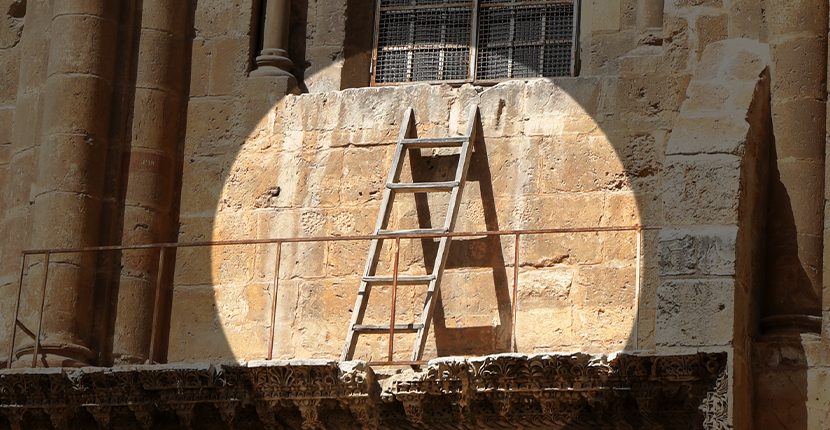There is an old immovable ladder resting on a ledge at perhaps the most significant church in Christianity.
Commonly known as the “immovable ladder,” it has been left in almost the same position for hundreds of years as rival church denominations can’t agree on what to do with it. The ladder is famous because it’s located at the Church of the Holy Sepulchre in Jerusalem.
No one knows how it got there or who put it there, although presumably it was used for repairs. References to and drawings of the ladder date back to the early 1700s. The first known photographs of the church depict the ladder in the 1850s. It hasn’t been used since.
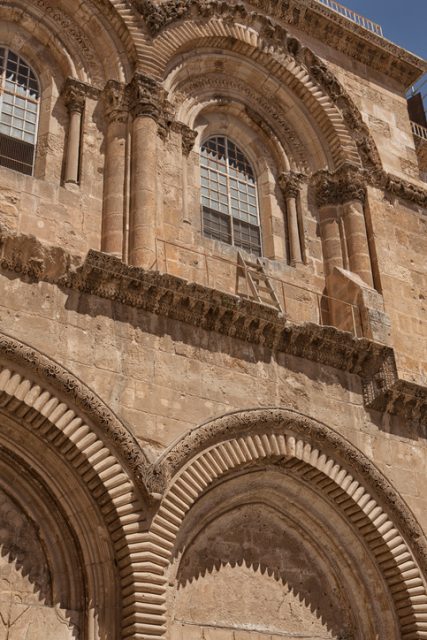
An edict in the early 1850s by the Sultan of the Ottoman Empire stated that the Church of the Holy Sepulchre was to be shared among the Greek Orthodox, Roman Catholic, and Armenian Apostolic Churches.
Three other church orders, the Coptic, Syrian, and Ethiopian Orthodox Church, were also given rights to use some parts of the building. It was considered a compromise to all denominations making claims to the church building.
The edict became known as the “Status Quo agreement.” The ladder then became “immovable,” because to be moved, all six church groups had to agree to it.
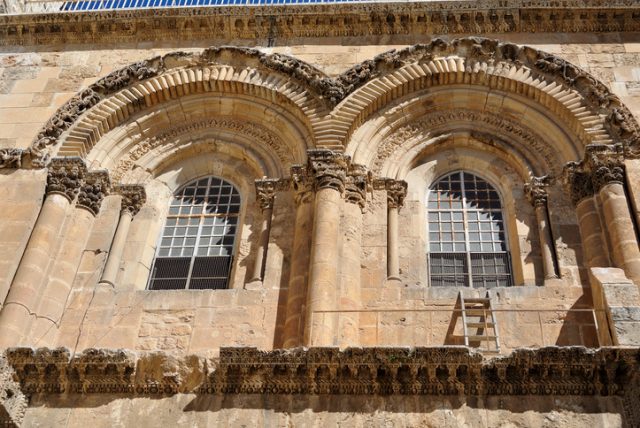
It was never agreed upon which church should take possession of the ladder and the mundane object became a symbol of the divisions within Christianity itself.
The Church of the Holy Sepulchre is coveted by most Christian denominations. It’s considered a holy site where the death and resurrection of Jesus Christ took place.
When Roman Emperor Constantine I converted to Christianity in the 4th century, he is said to have sent his mother, Saint Helena, to search for the burial place of Jesus in Jerusalem. Helena reportedly located the burial site, as well as the “True Cross” from which Jesus was crucified.
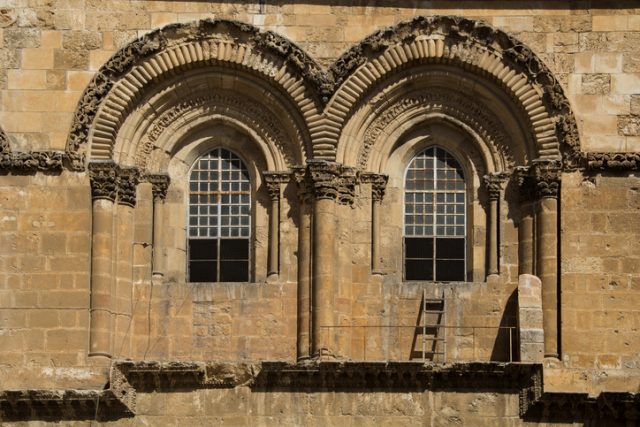
Constantine then ordered a church to be built on the site, replacing an existing pagan temple. The church was completed around 335. Pilgrims have been traveling to the church since the 4th century. Massive crowds of pilgrims and tourists continue to visit today.
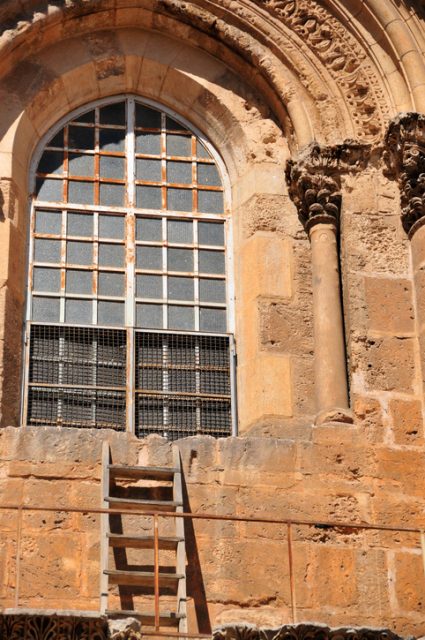
The Church of the Holy Sepulchre has been through many changes since the original construction. It was burned by the Persians in 614 and then restored around 10 years later.
The Islamic caliph in the 11th century destroyed it, but the church was later rebuilt by the Crusaders. Despite frequent repairs and remodeling, the current look of the church dates back to the early 1800s.
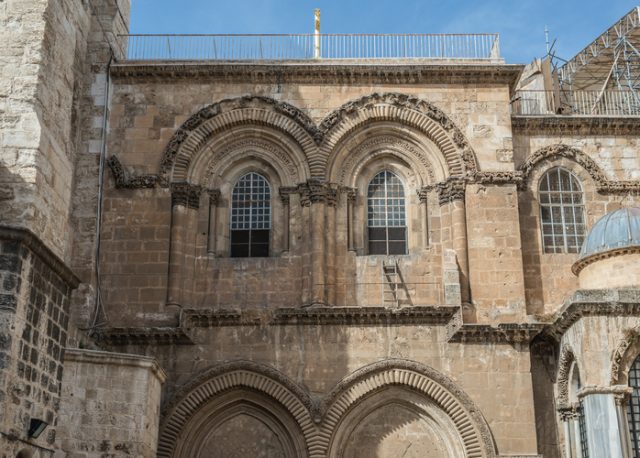
An uneasy truce had settled between religious orders since the “Status Quo” edict. However, arguments and violence did occasionally break out.
In a dispute in 2002, a Coptic Christian monk moved his chair slightly into Ethiopian Orthodox space. Eleven people were hospitalized after the fighting ended.
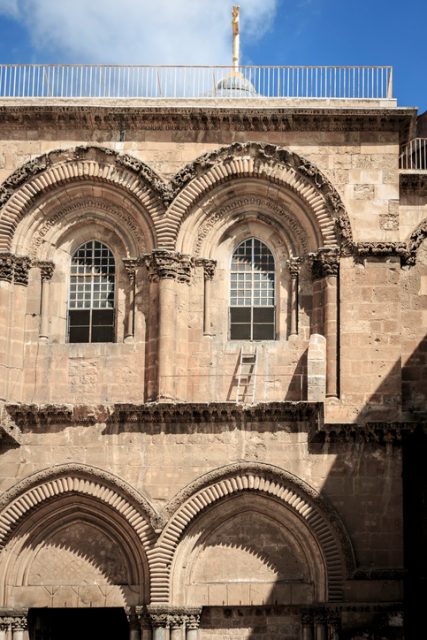
In 2008, fistfights broke out between Armenian and Greek monks in the church and riot police had to be called. Yet the immovable ladder has indeed been moved a few times. Twice in the 20th century, the ladder was taken, possibly as part of a prank, but found a short time later by police and put back in its original spot.
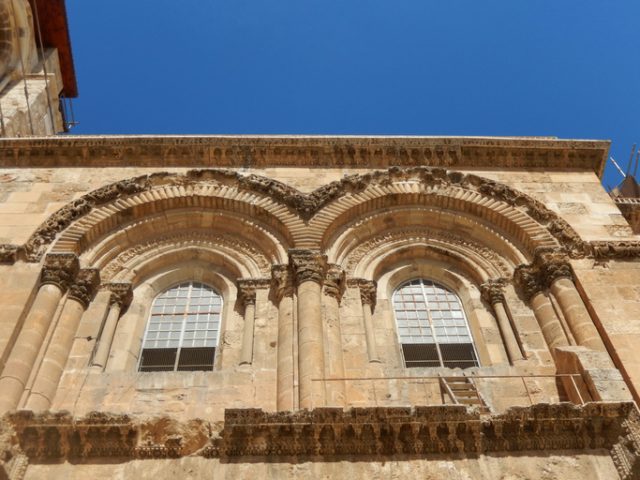
In 2009, it was agreed by all church parties to move the ladder temporarily, in order to accommodate scaffolding for renovations on the church.

Even a pope has gotten involved in the ladder controversy. Linking the historic break between the Orthodox and Roman Catholic Churches in 1054, Pope Paul VI, who reigned in the 1960s and 1970s, issued a papal request that the ladder not be moved until the Orthodox and Catholic Church reunite.
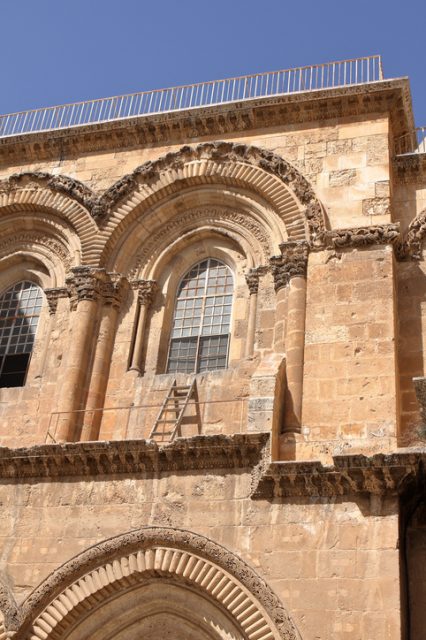
Because of the tensions among Christian denominations, a Muslim family has historically been entrusted with keeping the keys to the Church of the Holy Sepulchre. The keys keep getting handed down to the next generation.
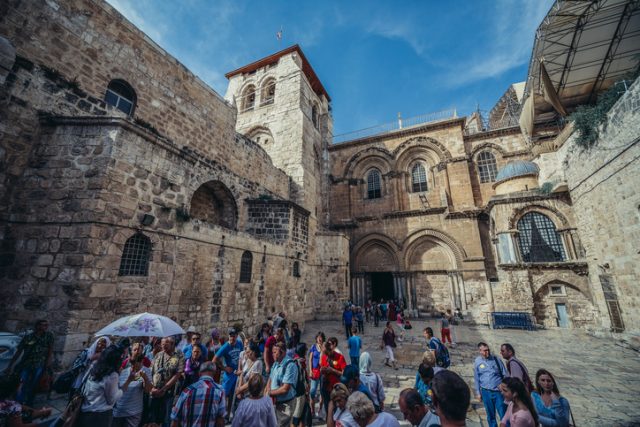
As a sign of neutrality, every morning, a member of the family opens the church doors for all denominations to enter.
The “Status Quo agreement” remains in place for this historic building. It looks like the immovable ladder is here to stay as well.
